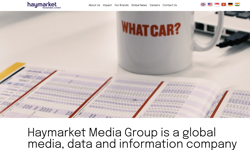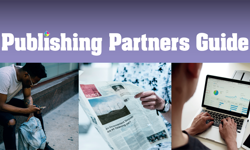Did you know that Amazon loses $3 on every Kindle Fire that it sells in the USA while Apple makes a $200 profit on each iPad2? Or, that Facebook generates under $4 revenue per year from each user while Google takes over $25 per year. Behind each of these four major digital players, there sit four very different business models. For example, the key to Amazon’s loss-leading hardware strategy is that each Kindle Fire owner is predicted to spend just over $135 per year on content downloads. Amazon has made a strategic decision to go down a content-driven route which is also high volume and low margin.
So, ‘How do they make money from doing that?’ is a question one often asks when looking at many digital companies. It is also the question at the core of the PPA’s Business Models for a Digital World project which Wessenden Marketing was commissioned to run. The aim is to capture how media companies are generating revenues from their end-users. The project draws on three pools of information. The first is a series of interviews with ten PPA publisher members, five consumer and five B2B - Dennis, Immediate Media, IPC, The Spectator, Which?, Incisive, Informa , RBI, UBM and William Reed. The second pool is benchmarking work with five major companies involved in the broader media and entertainment business – a national newspaper, a record label, a digital music service, a games company and a B2B data provider. The third area of data is made up of publisher research such as Publishing Futures, another joint PPA / Wessenden Marketing project.
What became immediately apparent right at the start of the Business Models project is that every single company involved is on a fast-moving journey which has three distinct stages to it: Legacy, Bolt-On and Rebuild.
1. Legacy
Legacy is the startpoint with “old world” products and services, such as print magazines and newspapers, music CDs, game DVDs where retail is usually the core route to market.
2. Bolt-On
Bolt-On is the second stage where the core legacy product has been enhanced with digital add-ons, often bundled together into bigger service packages which are delivered via an increasing number of channels, both physical and digital.
3. Rebuild
Rebuild is where the company has gone to the end-user to analyse properly what they actually want and how those wants fit into their broader lifestyle and workflow. The end result is a bottom-up rebuild of the whole product and service. In reality, a rebuilt product may actually look very like the old product: most of the contact points have remained the same, but it is the business model that sits behind them which has altered.
The most obvious example of this is the record label. In its Legacy form, the company managed the production, distribution and marketing of physical product, originally vinyl singles and LPs. A band would go on tour, often at a loss, to promote the sale of the LP, which is where the label’s real profits came from. This marketing activity was supported by free-to-consumer access to parts of the LP (radio airplay of a single from the album) which would drive paid-for sales of the single itself which in turn would drive album sales. In the new world, the record label has morphed into a “music manager” which co-ordinates all the activities of an artist – many labels have done this by buying other companies in the old music supply chain. Now a major record label has three key revenue streams – physical product (the good old CD!) still remains the bedrock, accounting for around half of the company’s revenues; digital products (paid-for downloads and streams) deliver approximately 30% of turnover with live events and merchandise generating 20%. These percentages vary massively by country – in Sweden, the home of Spotify, digital products account for 80% of turnover; in Italy, the contribution of live events rises to 40%. The figures also change artist by artist – Rihanna and Lady Gaga, both of whom have over 40m Facebook fans each (the old legacy “fanclub” has been given new life by the digital social networks), are very digitally-skewed and have massive merchandise operations based on the artists’ own websites.
The music example highlights a number of issues, the principal one being that while the new business model can still be based on the old business model, where the money-making transactions take place have altered: the dots are the same, but have just been joined up in new ways. The second point is that there is usually no longer a single business model for a company – the model can flex massively depending on the market sector, the product and the profile of the audience.
The Business Models report looks at the Legacy / Bolt-On / Rebuild migration across a number of factors:
* Customer insight & mapping, which has to be the core of any successful operation.
* Content shape. What are the core products and services that end-users really want?
* Content delivery. How the new channels and touchpoints are being co-ordinated.
* Pricing & payment architecture. Is there a logical strategy in place for different content packages being delivered via different channels?
* Payment mechanics. How people pay is becoming a massive front-end marketing issue as the emerging payment mechanisms are tying end-users into particular content providers.
* Organisational issues. All the other factors above impact on how the company is organised and whether it has the right skills in the right places.
Running through the whole project, there are a number of recurring themes…
Each sector is good at different things. It is fascinating to see the different strengths from industry to industry and from company to company.
End-users are similar across sectors. Our end-users do not sit in media silos. They are already proficiently multi-channel and increasingly we have to look outside our own area of media into the full range of media channels that users have and where we fit into that overall map.
Distribution partners are similar across sectors. We all keep bumping into Apple, Amazon, Google and Facebook, among others. We are all facing similar problems in managing the relationships with these digital juggernauts.
Losing control of distribution. The old waterfall supply chain with a top and a bottom, with clearly defined roles, rules and margins is rapidly being replaced in the digital world with a web of alliances and partnerships, each of which can have very different financial dynamics, the most fundamental of which is the price that the end-user pays for the service. Linked to this is how users pay for services, whether by a subscription or a micropayment, when the currency can be Facebook Credits, virtual currencies or real money which is handled through a money-management service like PayPal’s new Digital Wallet which reduces the role of the banks to passive holders of cash and reduces the strength of the link between the end-user and the content-creator.
Managing the data tsunami. The sheer volume of data, especially from web analytics, is a major challenge for every media company, which is why finding and tracking the key metrics is so crucial and they tend to revolve around factors such as churn, conversion rates and revenue per user.
Mapping and segmenting the user base are things to which everyone gives a lot of lip-service, but which few companies actually live up to in their day-to-day processes. Being able to identify and serve the “super-users” of our products lies at the core of all the new business models which are based on constantly flexing the key leverage points, with a reiterative test / tweak / test approach to business.
These recurring themes raise two issues which were referenced by every company interviewed, both the publishers and the external benchmark companies – getting IT to keep up in a business where every process is being tested and flexed constantly and changing the structure and culture of the organisation so that traditional media companies have the skills and knowledge on tap in the right places to keep up with the likes of Amazon and Apple.
So, are there any sage pieces of advice that emerge from the PPA Business Models project? Here are seven for starters…
1. Do not willingly throw away what currently works until you have something better to replace it. The old business models still have nuggets embedded in them.
2. Digital innovation and the “science of the possible” need to be balanced with hard-nosed, commercial commonsense.
3. “Free” is not a business model. It is a marketing tool to draw people (end-users or advertisers) into a transaction.
4. Forget the past… until it comes back in a new guise. Past history is no guarantee of present success. Past revenue and profit levels are a thing of the past, but old techniques and situations keep on coming back in new digital clothing.
5. Aim to be able to fail cheaply. Testing, trial and error, constant fine-tuning: all these things lie behind the new business models.
6. Find out who will pay how much for what. All the shedloads of data and insight are there simply to answer that question.
7. Know when to say no. There will be times when our business models and priorities simply do not match those of potential business partners. There will be times when what our end-users want (or say they want) are just uneconomic.
The emerging business models are both exciting and perplexing at the same time. Some will just not work. Some will turn out to be resource-hungry dead-ends. Yet some will take the business on to a completely new level. Finding out which is which is the challenge.
PPA is running a workshop on the Business Models for a Digital World project on May 30. For more details contact, Nicola Rowe, director of circulation & member services on 0207 400 7527 or nicola.rowe@ ppa.co.uk










